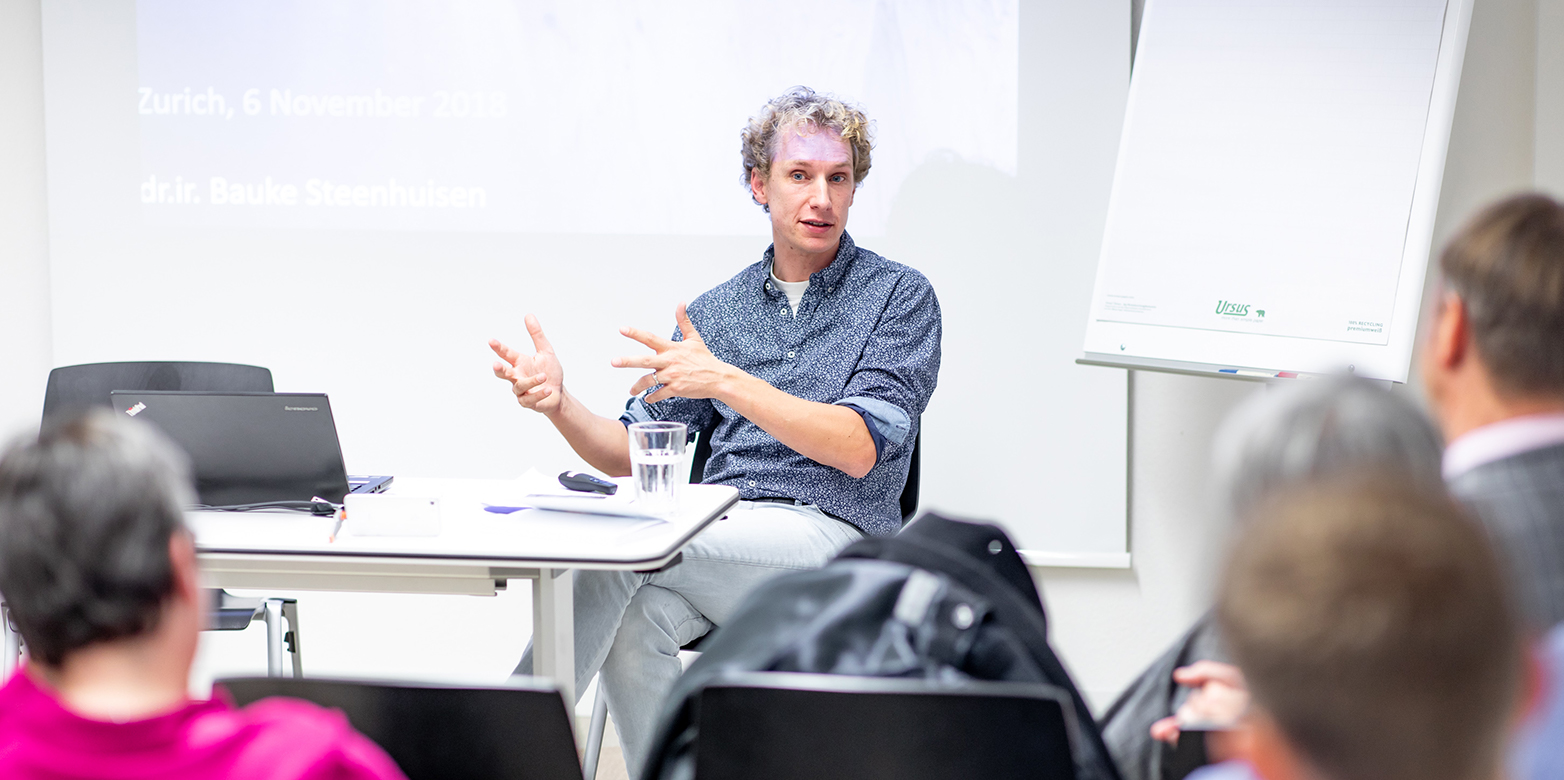Why Scientists and Engineers Should be Storytellers
Prof. Bauke Steenhuisen from the Technology, Policy and Management (TPM) Faculty at TU Delft, Netherlands, visited the ISTP to talk about the importance of storytelling.
by Jan Freihardt

Prof. Steenhuisen works on various topics, ranging from public policy making, over stakeholder involvement to research on the infrastructure sector (e.g. transport and energy). Since two years, he teaches a course on storytelling as part of the Honour’s Program of TU Delft, the concept of which he presented to us.
To begin with, Prof. Steenhuisen spoke about the status quo of how students pitch their work: Often, they wanted to sell a prototype/their conclusion by convincing the audience that they make the world a better place. In doing so, they do not want to talk about the uncertainty of their idea. He exemplified this observation with a project on Autonomous Vehicles (AV), where in the final report, the students assumed from the beginning that the technology will be successful, neglecting all uncertainties. Storytelling, by contrast, has the potential to create rich discussions by opening up the debate about whether or not the proposed solution will be a success.
Next, he presented the four elements of what makes storytelling successful: For a story to be catchy, it needs to have a character, who has a certain weakness and is facing a dilemma which forces him to make a choice. If these elements are present, the audience starts to care about the character, which enhances their willingness to get engaged into a discussion about the presented concept.
To illustrate this, Prof. Steenhuisen showed a short movie which emerged from his storytelling class and presented an alternative approach to the above-mentioned AV project. In the movie, we see a regular consumer who is buying a new car in a showroom. His weakness is that he is not a specialist on moral questions about life and death, but he still has to decide in the car settings about who should die in the case of an accident with unavoidable deaths: the pedestrian or the car passenger? In the face of this dilemma, he finally chooses to save the life of the passenger.
Clearly, this movie takes the perspective of the user group of an AV, whereas in their previous report, the students evaluated the technology only from the engineer’s viewpoint. By doing so, the movie involves the audience, it raises concerns and asks questions which are essential in the context of AV, but cannot be answered from the engineering perspective alone: Whose life should be protected in case of an accident? Who should be responsible to make this decision? Who is responsible for such a death – the car, the engineer, the owner? Opening up this discussion space is a characteristic of responsible innovation which goes beyond the actual technological advancement.
Prof. Steenhuisen predicts storytelling to become more important in the future. In the “traditional” view, governance problems are typically addressed by reinforcing stability through leadership, knowledge, norms and trust. However, as our society is facing new governance challenges such as digitalization or artificial intelligence, we lose control over checks and balances of the associated risks as these four principles do not work so well anymore. Storytelling can fill this void and help us create a vision of what kind of society we want to live in in the future.
To conclude, Prof. Steenhuisen compared storytelling to the classical sales pitch which is the dominant structure in many fields in academia as well as the business environment. A sales pitch has a clear target: It should convince the audience of a product or concept. Often, this concept is presented without ambiguities, as if there were no uncertainty. The possibilities of storytelling, by contrast, are much larger, as it allows us to stimulate a debate from different perspectives and, most importantly, by introducing the dilemma element. The latter implies that there is uncertainty related to the result which should be discussed openly. To summarize: whereas there are occasions where the sales pitch is necessary, it might be overemphasized and storytelling deserves more consideration.
In the final discussion with the audience, the main point of concern raised was that decisions which are made based on storytelling are not fully rational, but introduce an emotional component into the process. Prof. Steenhuisen replied that rationality has its limits and everybody is influenced by emotions to a certain degree. Therefore, they should not be excluded from the decision-making process, but rather be included in a deliberate way. Also, every innovation is connected to failures in some point of its development process. It is important to recognize this to design responsible innovations for the huge challenges to come!
We would like to thank Prof. Steenhuisen warmly for his visit to the ISTP and this interesting talk!
To get a broadened sense of the ISTP and our topics of interest and past seminars visit our Colloquium page.